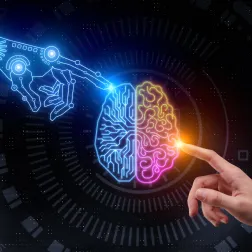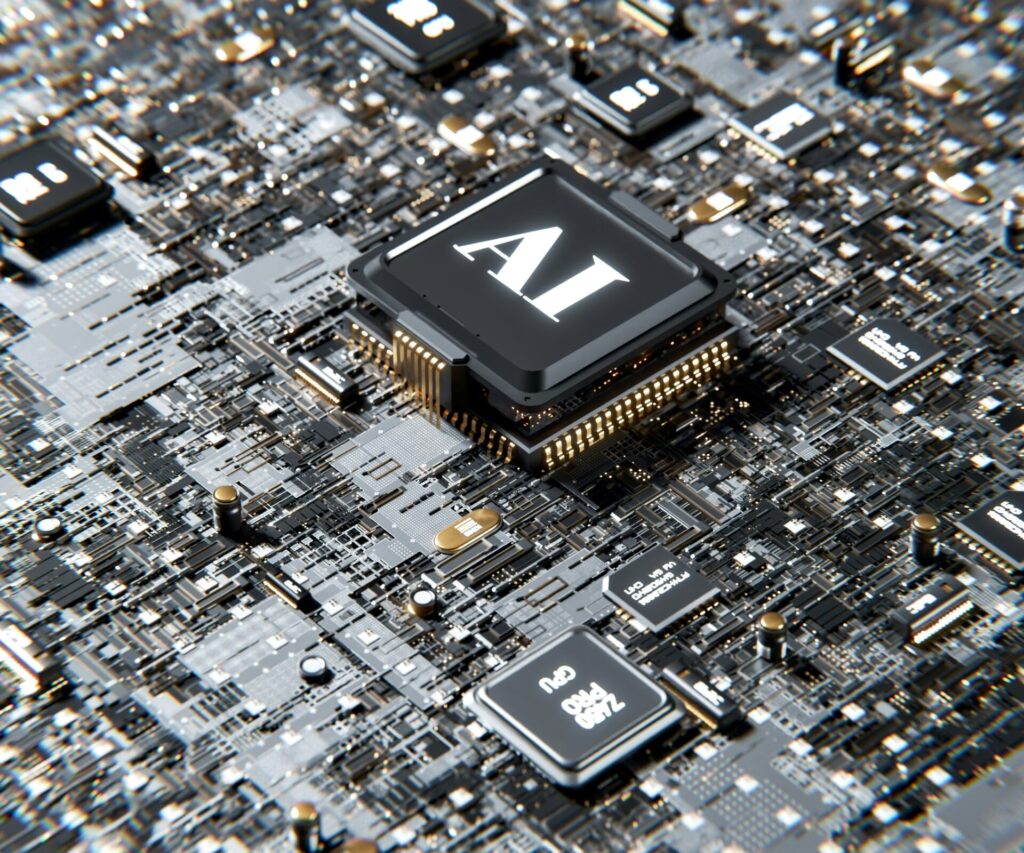When trying to understand how artificial intelligence works, it’s fundamental to compare it with our own brains. In this article, Dr Giovanna Maria Dimitri will explore how artificial neural networks work by learning about their structure and how the human brain inspired this.
| Giovanna Maria Dimitri holds a PhD in Computer Science, obtained at the University of Cambridge, with the dissertation: “Multilayer network methodologies for brain data analysis and modelling”. She is currently a post-doc at the Department of Mathematics and Engineering at the University of Siena. She graduated in July 2015 with an MPhil in Advanced Computer Science at the University of Cambridge, with distinction under the supervision of Dr Pietro Liò with a dissertation on “Predicting Drugs Side Effects from a Combination of Chemical and Biological Profiles”. She is a life member of Clare Hall College, Cambridge. |
Introduction
At its most basic, our brain is made up of neurons and synapses.
- Neurons are a highly specialised type of cell present in animal brains.
- Synapses connect the various neurons in a complicated reticulum (network) of connections.
The central part of the neuron is the so-called nucleus, and from the nucleus several dendrites (long extensions), known as axons, are present.
Figure 1: Figure showing the basic structure of a human brain neuron
Biological neurons produce brief electrical impulses, also known as action potentials (AP), and these signals are transmitted through the axons, allowing the connecting synapses to release a chemical signal known as a neurotransmitter. If a neuron receives a certain quantity of neurotransmitters within a certain period of milliseconds, then it produces its own electrical impulses, resulting in a chain reaction.
The functioning of each neuron seems pretty simple, but they are organized in vast networks which connect them to millions of other neurons, allowing this simple chain reaction to form the basis of everything from simple brain functions (like regulating heart rate or processing sensory inputs like light and smell) to complex thinking. But there was a time before we understood these processes, and it took some outside-of-the-box thinking to figure out how these tiny cells in our brains worked.
Building Artificial Neural Networks
The idea behind building artificial neural networks was to create a mathematical model of the brain’s structure to help us understand how it worked, and use the brain’s amazing ability to learn and understand things within machines, enabling them to perform tasks that require human-like intelligence.
This effort dates back to 1943, when two scientists, Warren McCulloch and Walter Pitts, published an important paper titled “A Logical Calculus of the Ideas Immanent in Nervous Activity”. In this article, they introduced the first mathematical model of biological neurons and artificial neurons. Warren McCulloch was a neurophysiologist (someone who studies how the brain works), and Walter Pitts was a logician (someone who studies logical thinking).
A model is like a simplified version of something complicated that helps us understand it better. Imagine building a model of a house using LEGO bricks. The model house isn’t the same as a real house, but it helps you understand how the rooms fit together and what the house might look like.
In their paper, McCulloch and Pitts created a simplified version of how brain cells (neurons) work using math and logic. They imagined neurons as tiny devices that can either be “off” (0) or “on” (1), like a light switch. The neuron turns “on” (fires) if it gets enough signals (inputs) from other neurons, kind of like how a light turns on if you press the switch.
By creating this simplified model, McCulloch and Pitts showed that neurons could do basic logical tasks, like deciding if two things are true at the same time (AND), if at least one thing is true (OR), or if something is not true (NOT). This helped them explain how neurons could follow rules and make decisions – helping scientists understand how the simple actions of neurons could lead to more complex thinking and brain functions.
Developing the Model
Inspired by this model presented by McCulloch and Pitts, in 1957, Frank Rosenblatt proposed the so-called Rosenblatt Perceptron, also known as the Threshold Logic Unit (TLU). The perceptron was designed to mimic the way biological neurons process information. An example of the TLU with three inputs is reported in Figure 2.
Figure 2: Rosenblatt perceptron example with three inputs
In this diagram, the TLU receives the weighted sum of the inputs (in the example in the Figure we have 3 inputs, W1, W2, and W3), performs a sum of these inputs, and returns the output by applying a function (calculation) specific to that neuron. The calculation associated with the neuron is called the activation function. In the original formulation of the Rosenblatt perceptron, the activation function is called the step function, as depicted in Figure 2.
What made the perceptron significant was its ability to learn from experience. Rosenblatt developed a learning algorithm that adjusted the weights of the inputs based on errors in the perceptron’s output, improving its accuracy over time. This was a key step towards creating machines that could learn and adapt, similar to how humans do.
Join the Immerse Education 2025 Essay Competition
Follow the instructions to write and submit your best essay for a chance to be awarded a 100% scholarship.

Using the Perceptron to Understand Our Brains
It was later shown that by adding up several perceptrons, we could build a more complicated artificial neural network. These multilayer perceptrons could recognise patterns and perform tasks that single-layer networks couldn’t, such as image and speech recognition. This marked the beginning of more advanced AI systems, showing that artificial neural networks could solve problems and make decisions in ways similar to the human brain.
Thus, the perceptron built on the foundation of the McCulloch-Pitts model by introducing a learning mechanism and demonstrating the potential of neural networks to perform complex tasks, advancing both our understanding of brain function and the development of artificial intelligence.


























